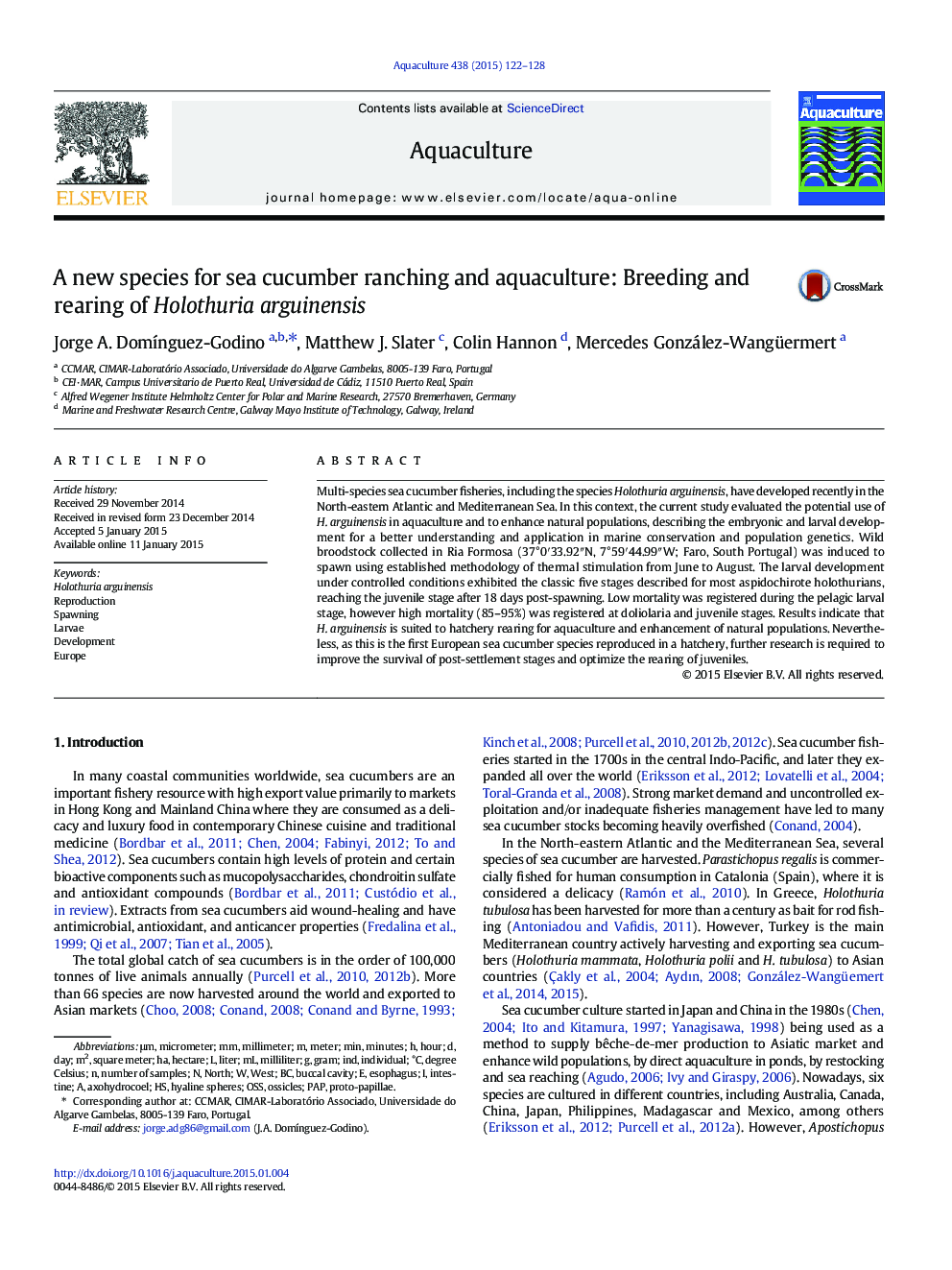| Article ID | Journal | Published Year | Pages | File Type |
|---|---|---|---|---|
| 2421655 | Aquaculture | 2015 | 7 Pages |
Multi-species sea cucumber fisheries, including the species Holothuria arguinensis, have developed recently in the North-eastern Atlantic and Mediterranean Sea. In this context, the current study evaluated the potential use of H. arguinensis in aquaculture and to enhance natural populations, describing the embryonic and larval development for a better understanding and application in marine conservation and population genetics. Wild broodstock collected in Ria Formosa (37°0′33.92″N, 7°59′44.99″W; Faro, South Portugal) was induced to spawn using established methodology of thermal stimulation from June to August. The larval development under controlled conditions exhibited the classic five stages described for most aspidochirote holothurians, reaching the juvenile stage after 18 days post-spawning. Low mortality was registered during the pelagic larval stage, however high mortality (85–95%) was registered at doliolaria and juvenile stages. Results indicate that H. arguinensis is suited to hatchery rearing for aquaculture and enhancement of natural populations. Nevertheless, as this is the first European sea cucumber species reproduced in a hatchery, further research is required to improve the survival of post-settlement stages and optimize the rearing of juveniles.
